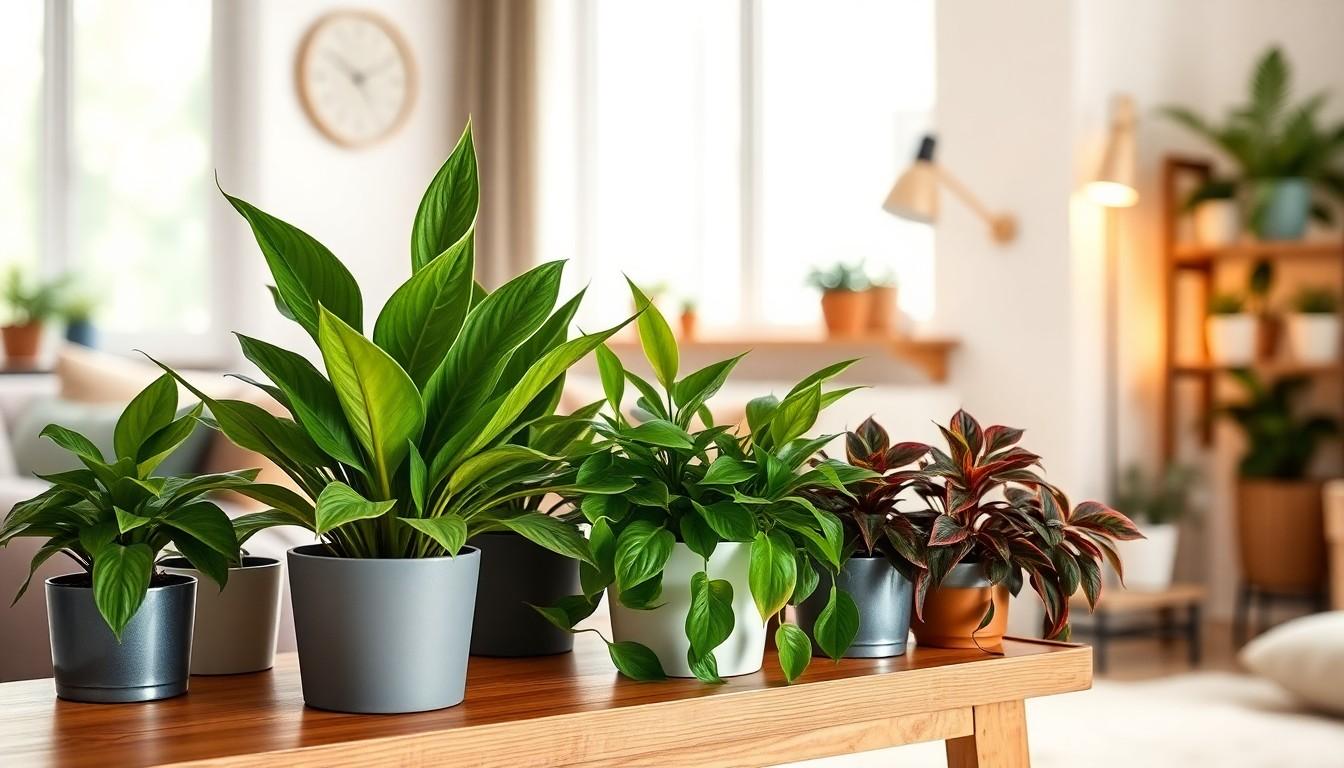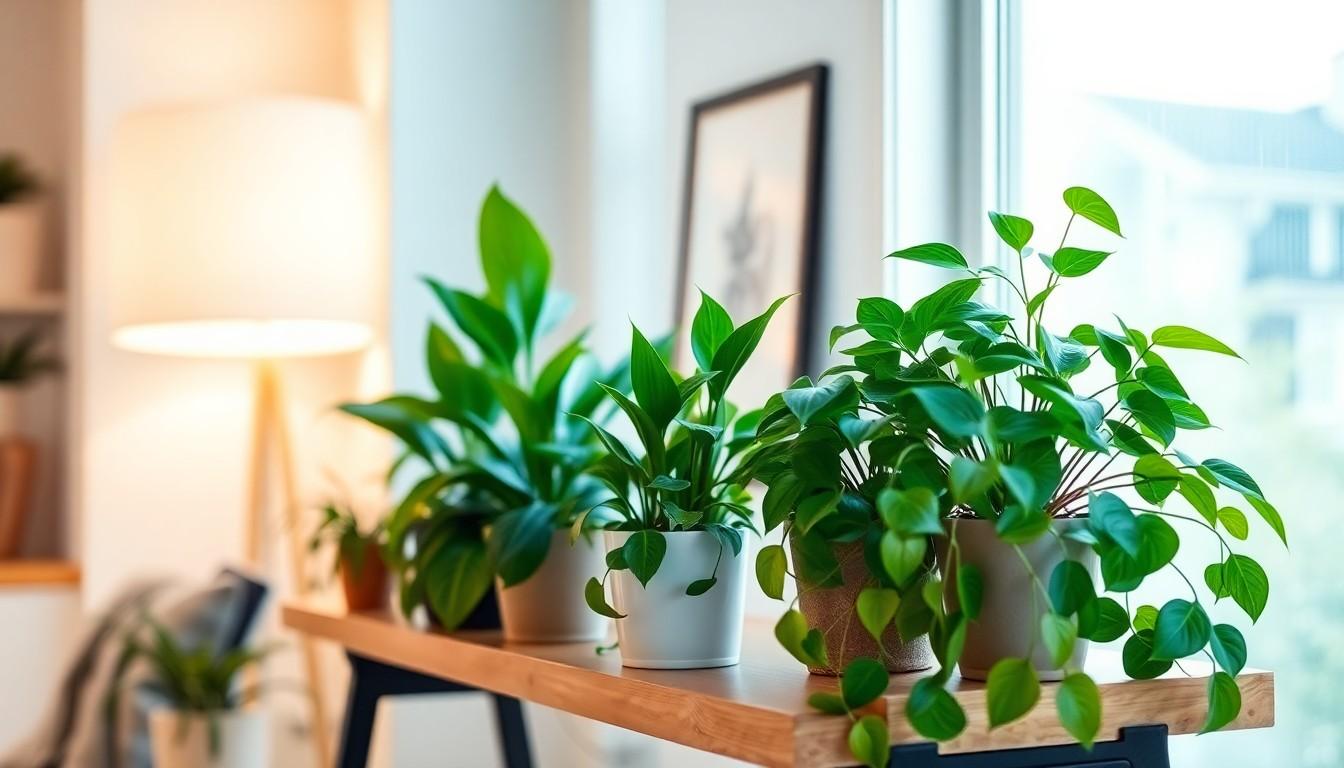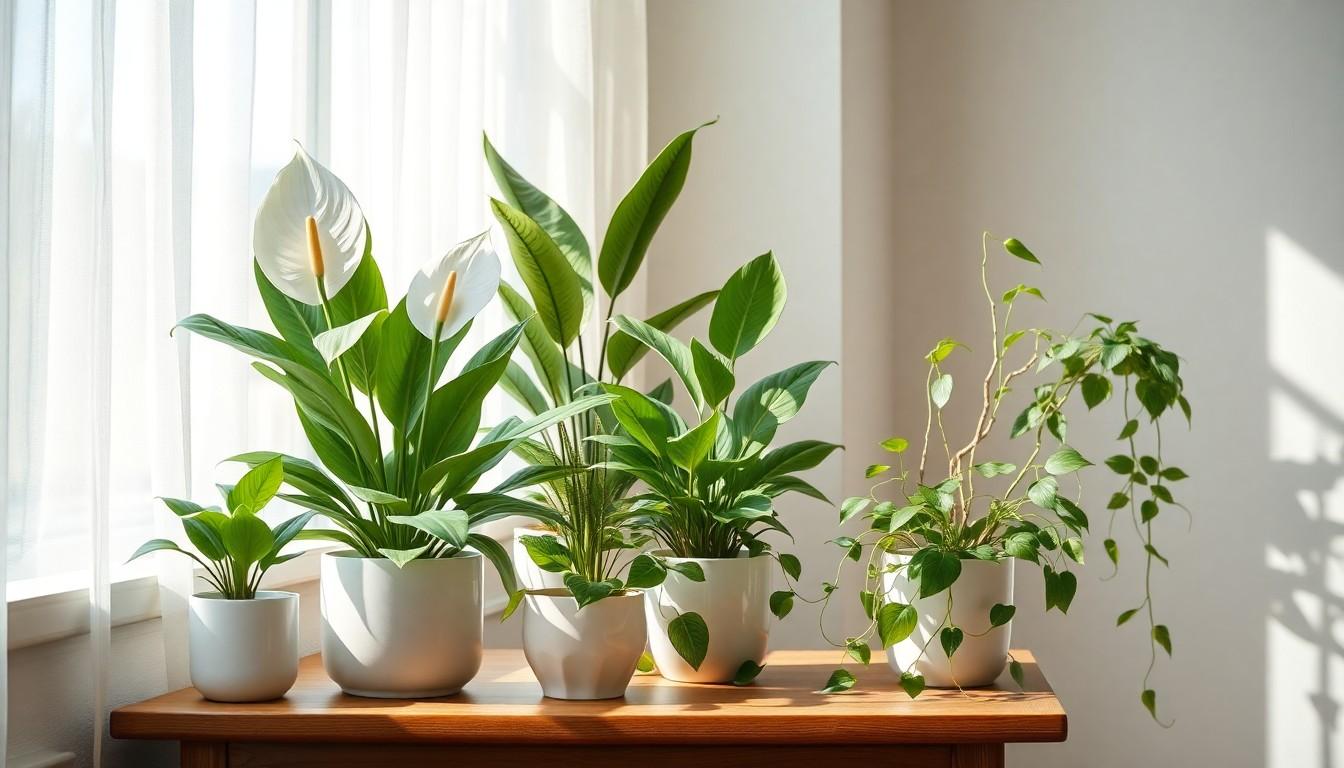In a world where sunlight seems to play hard to get, small low light indoor plants are the unsung heroes of home decor. These little green wonders thrive in the shadows, proving that you don’t need a sun-soaked garden to enjoy the beauty of nature indoors. Whether you’re a self-proclaimed plant killer or just someone who forgot what sunlight looks like, these resilient plants have got your back.
Imagine a lush oasis in your living room that doesn’t require a degree in botany or a sunlamp the size of a small car. With their quirky shapes and vibrant leaves, low light plants not only purify the air but also bring a splash of life to any corner of your home. So, why not embrace the dark side? It’s time to discover the perfect companions that will flourish even when the sun decides to take a vacation.
Small Low Light Indoor Plants
Small low light indoor plants thrive in environments where light levels are minimal. These plants adapt well to shaded areas, making them ideal companions for homes and offices with limited natural light. Some popular choices include the Snake Plant, Pothos, and ZZ Plant, each exhibiting unique characteristics and benefits.
The Snake Plant, known for its tall and upright leaves, requires little maintenance and tolerates neglect. Pothos, a versatile trailing plant, offers vibrant green and yellow variegated leaves. The ZZ Plant features glossy leaves that reflect light, adding a polished look in dim spaces.
Benefits of low light plants extend beyond aesthetics. For example, many of these plants purify indoor air by filtering toxins, contributing positively to overall well-being. Studies show that plants like the Peace Lily and Spider Plant excel in removing harmful chemicals from the air, creating a healthier environment.
Care for small low light indoor plants remains straightforward. Regular watering is essential, but overwatering can lead to root rot. It’s advisable to allow the soil to dry out between waterings. Furthermore, occasional fertilization during the growing season promotes healthy growth.
Incorporating small low light indoor plants into living spaces enhances the overall ambiance. They can be placed on shelves, desks, or tabletops, adding touches of greenery without requiring large amounts of space. With the right selection, anyone can create a lush indoor oasis, transforming their environment into a serene retreat.
Benefits Of Small Low Light Indoor Plants


Small low light indoor plants provide numerous advantages that enhance indoor environments. They are perfect for brightening up spaces with limited natural sunlight while offering functional benefits.
Improved Air Quality
Improving air quality stands out as one of the key benefits of small low light indoor plants. These plants purify indoor air by filtering harmful toxins such as formaldehyde and benzene. Specific species, like the Snake Plant and Pothos, excel in this role. They absorb carbon dioxide during photosynthesis, producing oxygen that contributes to a healthier living space. Studies from NASA reveal that indoor plants can significantly reduce indoor air pollution levels. Incorporating these plants creates a fresher atmosphere, promoting better health for those who inhabit the space.
Aesthetic Appeal
Creating a visually appealing environment is another benefit of small low light indoor plants. A variety of shapes and colors, such as the lush, green leaves of the ZZ Plant or the vibrant patterns of Pothos, add interest to any room. Placing these plants on shelves or desks introduces a touch of nature indoors without taking up much space. Their design versatility complements various interior styles, from modern to traditional. Small low light indoor plants not only transform dull corners into lively areas but also foster a sense of tranquility and relaxation.
Popular Types Of Small Low Light Indoor Plants
Small low light indoor plants add beauty and health benefits to any space. Three popular options include the Snake Plant, Pothos, and ZZ Plant.
Snake Plant
Known for its striking, upright leaves, the Snake Plant requires little maintenance. This plant tolerates neglect, thriving in low light and with minimal watering. Leaves exhibit a unique structure, making it visually appealing in any setting. Popular for its air-purifying qualities, it can filter toxins such as formaldehyde and benzene, improving indoor air quality. Its resilience makes the Snake Plant a favorite among both novice and experienced plant owners.
Pothos
Pothos captivates with its vibrant, heart-shaped leaves that display striking variegation. This climbing plant thrives in low light, making it perfect for draping over shelves or hanging planters. Its adaptability to various environments ensures consistent growth with minimal effort. Furthermore, Pothos effectively removes indoor pollutants, contributing to a healthier living space. Regular watering combined with occasional fertilization promotes lush foliage, transforming any corner into a green haven.
ZZ Plant
The ZZ Plant stands out due to its glossy, dark green leaves that add an elegant touch. Thriving in low light, this plant is remarkably resilient, requiring infrequent watering. The thick, waxy leaves help retain moisture, ensuring it survives even with neglect. ZZ Plants excel at filtering toxic compounds, enhancing air quality in homes and offices. Its unique appearance combined with low care requirements makes the ZZ Plant an ideal choice for busy individuals seeking greenery.
Care Tips For Small Low Light Indoor Plants
Caring for small low light indoor plants involves straightforward practices that promote their health. These resilient plants thrive with minimal attention, making them excellent companions for any indoor space.
Watering Guidelines
Watering these plants requires careful attention. Typically, it’s best to check the soil dryness before watering. When the top inch of soil feels dry, it’s time to water. Ensure thorough watering so that excess moisture drains from the pot. Overwatering leads to root rot, a common issue for many low light plants. Generally, plants like Snake Plants prefer less frequent watering compared to Pothos or ZZ Plants. During winter months, reduce watering frequency, as these plants enter a dormant phase.
Soil Requirements
Soil composition plays a crucial role in plant health. A well-draining potting mix suits most small low light plants. Consider using a blend of regular potting soil with perlite or sand to enhance drainage. Typically, Snake Plants enjoy gritty soil, while Pothos thrive in a moisture-retaining medium. ZZ Plants adapt to various soil types but prefer a mix that drains excess water. Regularly check the soil for compactness; aerating it prevents root issues and promotes healthy growth.
Ideal Pot Sizes
Selecting the right pot size impacts your plants’ growth positively. Small to medium-sized containers work well for low light plants. Typically, pots should allow for some growth without being too large to hold excess moisture. A pot with a diameter of 6 to 8 inches is often ideal for most small plants, promoting healthy root development. Drainage holes at the bottom are essential to prevent water accumulation. When repotting, choose a container only one size larger to encourage stable growth.
Aesthetic Beauty and Improved Air Quality
Small low light indoor plants are an excellent choice for anyone looking to elevate their living space. Their ability to thrive in dim conditions makes them perfect for homes with limited natural light. By incorporating these resilient plants into decor, individuals can enjoy both aesthetic beauty and improved air quality.
With minimal care requirements, these plants can flourish in various environments. Whether it’s the striking Snake Plant or the charming Pothos, each plant offers unique benefits. Embracing small low light plants not only adds life to indoor spaces but also fosters a healthier atmosphere, making any home feel more inviting.

